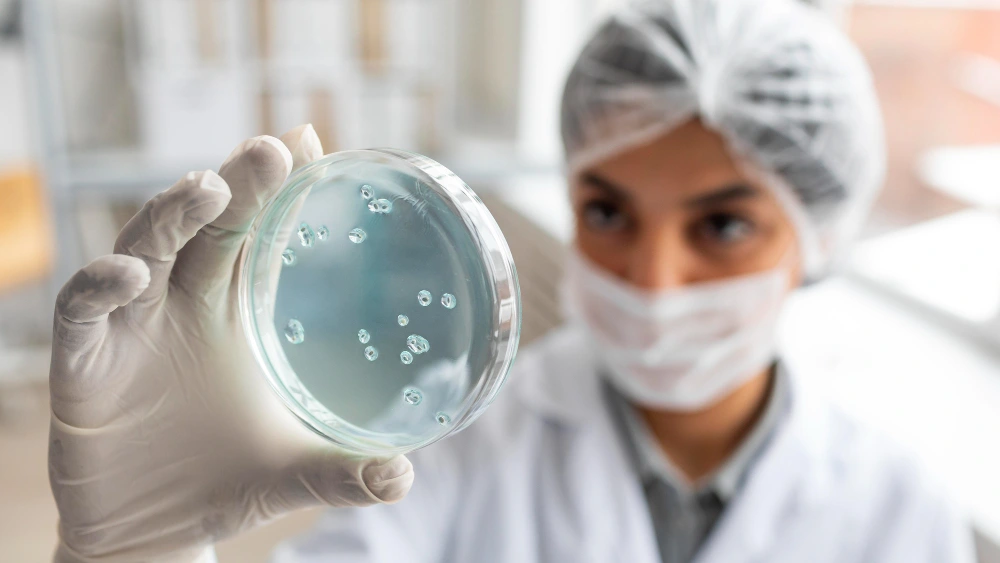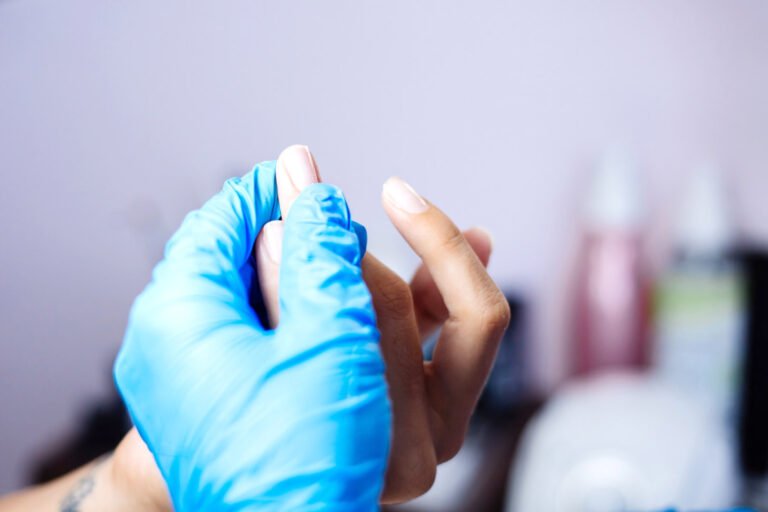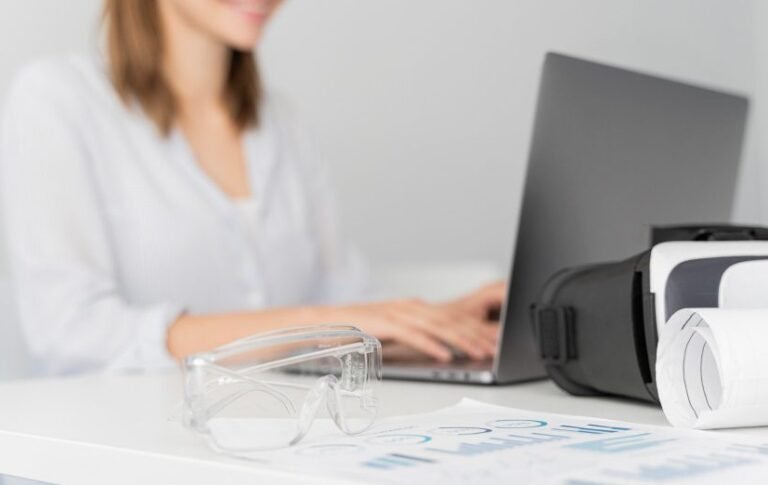In vitro testing for cosmetics is gaining global traction as a reliable and ethical alternative.
Since the U.K. first restricted animal testing in 1998, the shift toward non-animal methods—like in vitro approaches—has expanded across the EU and beyond. Today, more than 40 countries have banned animal testing for cosmetics, further reinforcing the relevance and adoption of in vitro testing worldwide.
The message is clear: the beauty industry is moving toward cruelty-free alternatives. But what does this mean for cosmetic manufacturers?
The shift toward in vitro testing isn’t just about ethics — it’s about better science. Several in vitro methods have gained approval from international regulatory bodies as viable alternatives to animal testing.
These laboratory-based approaches use human cells and reconstructed tissues to evaluate cosmetic safety, offering something animal testing never could: direct relevance to human biology.
This reality creates both opportunities and challenges for cosmetic companies. Markets worldwide are demanding cruelty-free products while regulatory authorities increasingly accept in vitro methods as the gold standard for safety assessment.
The question isn’t whether in vitro testing will replace animal testing — it already has in most regulated markets. The question is whether your brand is prepared for this new landscape of cosmetic development, regulatory compliance, and consumer expectations.
Understanding In Vitro Testing
The term “in vitro” comes from Latin meaning “in glass” and it’s exactly what it sounds like. These experiments take place in controlled laboratory environments, and may use cells, human tissues, and other technologies, replacing live animals.
And it is becoming increasingly popular! For exemple, in vitro methods play a central role in the EU Cosmetics Regulation (EC) No 1223/2009, which prohibits animal testing for cosmetic products and their ingredients.

But how does testing cosmetics “in glass” actually work?
Human Cells in Laboratory Conditions
In vitro testing studies biological cells and tissues outside their natural environment — typically in Petri dishes, test tubes, or specialized chambers.
The key difference from traditional methods is simple: these tests use human cell cultures or reconstructed tissue models to evaluate how cosmetic ingredients interact with biological systems.
The approach follows the “3R” principle — Refinement, Reduction, and Replacement of animal tests. This isn’t just theoretical science anymore.
The practical advantages make business sense: these methods are less time-consuming, more cost-effective, and reduce the need for human volunteer participation.
Four Main Types of In Vitro Methods
The cosmetics industry uses several sophisticated approaches:
- Cell-based assays — These measure biological responses like inflammation markers or cell death when exposed to cosmetic ingredients.
- Cell-free assays — These evaluate effects on enzymatic reactions or receptor binding without using intact cells.
- 3D reconstructed tissue models — Multi-layered structures that mimic human skin’s complexity and function.
- Skin-on-chip technology — Microfluidic systems that recreate dynamic conditions of living skin tissue, supporting long-term tissue survival through efficient nutrient transport.
These methods can evaluate various cosmetic properties including toxicity, sensitization, anti-aging effects, skin hydration, and hair growth.
What does this mean for cosmetic manufacturers? You’re no longer limited by the biological differences between animal models and human skin. These technologies test directly on human tissues — exactly what your products are designed for.
Regulatory Acceptance: The New Global Standard
Regulatory authorities worldwide now recognize in vitro testing as scientifically valid and legally acceptable.
The Organization for Economic Cooperation and Development (OECD) has established standardized protocols that regulatory bodies across multiple markets follow.
Their guidance document “In Vitro Skin Irritation: Reconstructed Human Epidermis Test Method” represents just one example of validated alternatives that have gained official approval from EURL ECVAM (European Center for the Validation of Alternatives Methods).
This regulatory acceptance creates a clear pathway for cosmetic companies.
Products tested using validated in vitro methods can now meet safety requirements in major markets without traditional animal testing. The standardized protocols ensure consistency and reliability across different laboratories and regions.
What does this mean for your regulatory strategy?
Companies using validated in vitro methods can demonstrate compliance with international safety standards while accessing markets that have banned animal testing. This regulatory recognition eliminates the compliance barriers that once made cruelty-free product development challenging.

Global Regulatory Landscape: In Vitro Testing for Cosmetics
As alternative methods gain recognition, regulatory frameworks around the world are evolving to incorporate in vitro testing as a scientifically reliable and ethically preferable approach.
While the ultimate goal—consumer safety—remains consistent, the path toward regulatory acceptance of non-animal methods varies by region.
European Union
The EU has long been considered a pioneer in animal testing bans for cosmetics. Testing finished products on animals has been banned since 2004, followed by a ban on animal testing for ingredients in 2009. Since 2013, a full marketing ban prohibits the sale of any cosmetics tested on animals, regardless of alternative availability.
The European Union Reference Laboratory for Alternatives to Animal Testing (EURL ECVAM) plays a key role in validating and promoting new methods. Recently, its Scientific Advisory Committee confirmed the reliability of reconstructed human skin models for genotoxicity testing, eliminating the need for animal-based confirmation.
United States
The U.S has taken significant steps to encourage alternatives to animal testing. The Modernization of Cosmetics Regulation Act of 2022 (MoCRA)establishes that animal testing is not mandatory for the marketing of cosmetic products.
Furthermore, the FDA states that before using animals, the use of scientifically valid alternative methods should be considered, thus enabling cosmetic companies to use in vitro and in silico methods to demonstrate product safety.
Brazil
Brazil has made important strides in supporting alternative testing methods. The National Health Surveillance Agency (Anvisa) recognizes several validated in vitro techniques approved by CONCEA (Brazil’s National Council for the Control of Animal Experimentation).
Brazil is also engaged in international discussions on the 3Rs (Replacement, Reduction, and Refinement), reinforcing its commitment to progressive safety testing approaches.
Furthermore, law 15.183 of 2025 prohibits the use of animals for testing personal hygiene products, cosmetics and perfumes, and their ingredients.
Canada
In 2023, the Canadian government announced regulatory updates aimed at banning animal testing, signaling a shift toward more modern, ethical safety evaluations aligned with international standards.
China
Historically known for requiring animal testing, China has made notable progress in recent years.
Since 2021, “general cosmetics” may be sold without animal testing under certain conditions.
The country also partners with institutions like the Institute for In Vitro Sciences (IIVS) to promote the use and validation of alternative methods. Training in in vitro techniques has been widely adopted by Chinese scientists and regulators.
India
India banned animal testing for cosmetics in 2014 and also prohibits the import of cosmetic products tested on animals.
This has positioned the country as an early leader in adopting non-animal approaches like in vitro testing, which are now standard in safety assessments for cosmetics entering or manufactured in India.
Middle East
The regulatory landscape in the Middle East is still evolving. Some countries, such as the United Arab Emirates, are gradually aligning with international practices and exploring the adoption of alternative methods.
However, regulatory acceptance of in vitro testing remains uneven across the region, and further harmonization is needed.
As you can see, your cosmetic products must meet each target market’s specific requirements. Understanding these regulatory differences is crucial for successful international expansion and avoiding costly compliance issues.
At Sobel, we help you assess regulatory requirements across your target markets and develop strategies that ensure compliance with local authorities. Our expertise covers global regulatory frameworks, helping your products meet safety standards while avoiding unnecessary delays or rejections.
Market Forces are Reshaping Beauty — Here’s What You Need to Know
The business case for in vitro testing goes far beyond regulatory compliance. These methods are creating new market opportunities and changing how successful beauty brands operate.

Speed becomes competitive advantage
Time-to-market has become a critical differentiator in beauty. In vitro testing delivers results in days rather than months, allowing brands to capitalize on trends before competitors catch up.
Digital imaging technology now quantifies product benefits with precision, providing the visual evidence that builds consumer trust and supports marketing claims.
The cruelty-free market opportunity is massive
The numbers tell a compelling story: the vegan beauty market is projected to surpass $21 billion by 2027.
Established brands are taking notice. Many are reformulating existing products to obtain cruelty-free certifications, recognizing that in vitro testing enables innovation without compromising their ethical positioning. This shift isn’t just about meeting consumer demands — it’s about accessing a rapidly expanding market segment.
Consumer research drives transparency requirements
Today’s consumers research extensively before purchasing. This behavior has prompted brands to expand clinical trials across wider ranges of skin types, ages, ethnicities, and genders. The result? More inclusive testing that strengthens scientific validity while building deeper consumer confidence.
Brands that can demonstrate comprehensive, transparent testing using human-relevant methods gain a significant trust advantage in competitive markets.
Personalization creates premium opportunities
Perhaps most exciting for forward-thinking brands: in vitro testing enables personalized skincare development based on individual genetic backgrounds.
These capabilities allow truly customized formulations tailored to specific skin needs — opening premium market segments that weren’t previously accessible.
The message is clear: in vitro testing isn’t just about replacing animal testing. It’s about positioning your brand for success in a market where speed, ethics, transparency, and personalization determine winners and losers.
Your Cosmetic Brand’s Next Strategic Move
The cosmetic testing landscape has fundamentally shifted. What once seemed like “alternative” methods are now regulatory requirements in major markets worldwide. Companies that recognize this reality — and act on it — position themselves for success in an increasingly competitive industry.
This change creates both opportunities and challenges for cosmetic manufacturers. Brands embracing in vitro testing gain faster development cycles, reduced costs, and stronger consumer trust. More importantly, they access markets that have closed their doors to animal-tested products.
Yet challenges remain. Successfully adapting to in vitro testing requires technical expertise, regulatory knowledge, and strategic planning. Each market has specific requirements for alternative testing methods, and compliance documentation must meet evolving standards.
The wrong approach can delay market entry or result in product rejection by regulatory authorities.
Your cosmetic products can succeed in this new landscape with expert guidance.
At Sobel, we help cosmetic companies adapt their testing and regulatory strategies to meet current market realities. Our team guides you through in vitro testing requirements, regulatory compliance, and strategic market entry across global markets.
Ready to position your brand for success in the cruelty-free cosmetic landscape?
Connect with our regulatory experts to develop a comprehensive strategy that meets your business goals and regulatory requirements.




